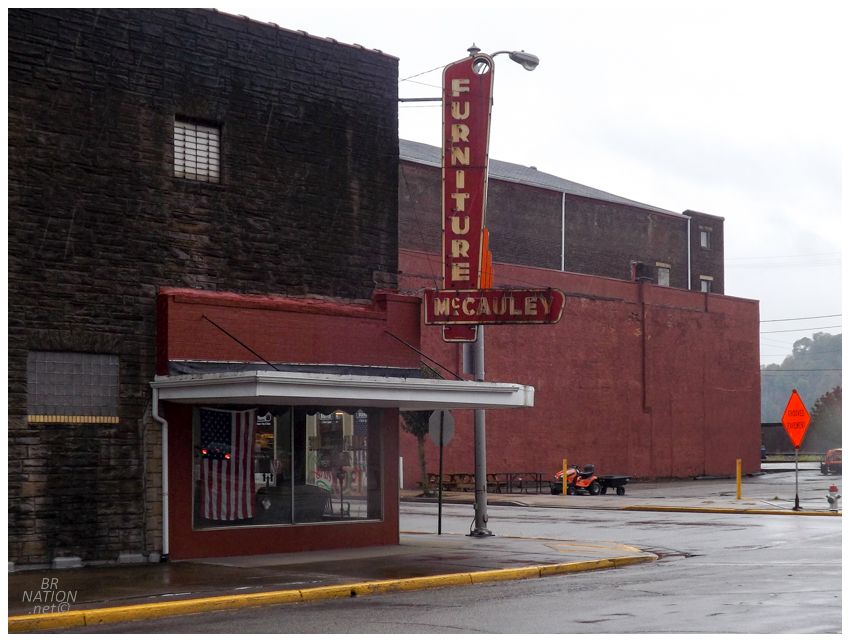
Another hour of driving along the Ohio River brought me to Ironton, which was more of what I expected from the county seats down here. While the Ohio River still wasn't featured prominently, there were lots of great old brick and stone relics with some sadly having their upper floors boarded up. |
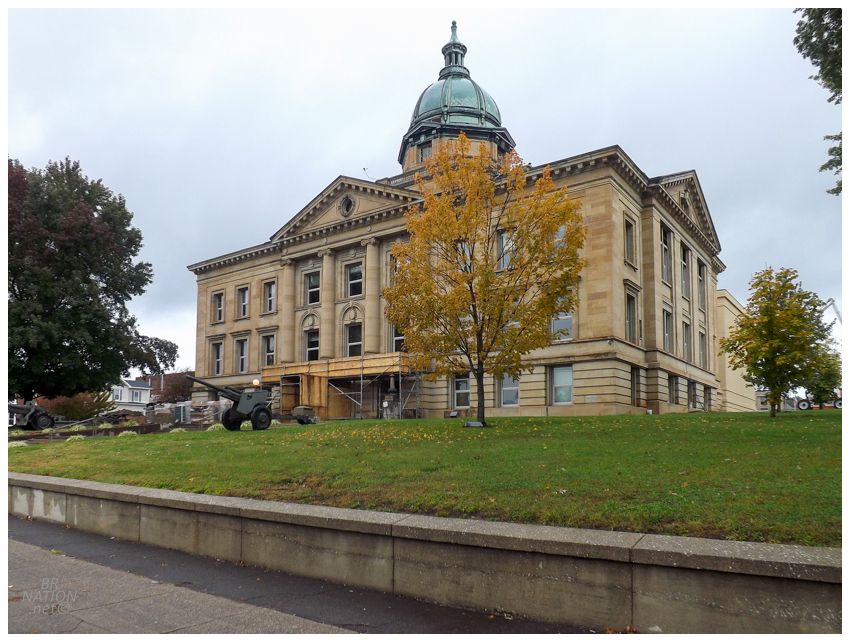
One exceptionally maintained building was the Lawrence County Courthouse. I was pleased to see renovation work going down. |

I was about to take a closer look at the courthouse, but I was distracted by and gravitated towards an apparent ruin just down the street. This was the Ironton Memorial Hall. On May 26, 1891, ground was broken on the site of the old Ironton farmer's market, to construct a memorial hall for those lost in the Civil War and the veterans who survived as members of the Grand Army of the Republic (GAR). Ironton's GAR building was completed in 18 months, with designs from the architectural firm of Packard & Yost. J.W. Yost was the man responsible here in Ironton. He had come from Pennsylvania to Columbus to design buildings and apply the architectural style he loved, Richardson Romanesque. Another great example of his work is Orton Hall on the campus of OSU. |
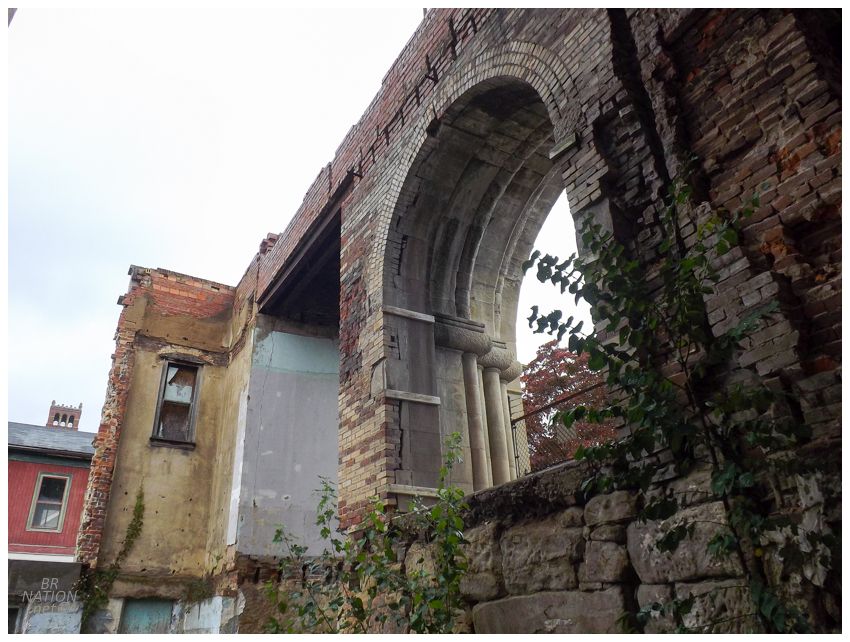
The GAR building didn't last as a memorial hall for long, with the Ironton city offices and town jail moving into the building in the 1900s. Some fun Facebook comments relay stories of spending the night in the basement drunk tank, as well as the interesting fact that women avoided walking past the building due to the cat-calling and harassment erupting from the jail cell windows looking outside. The town government left the building in 1995 to move into a 1926 building, citing that Memorial Hall needed a new roof, floor joists and stair repairs by that time. |
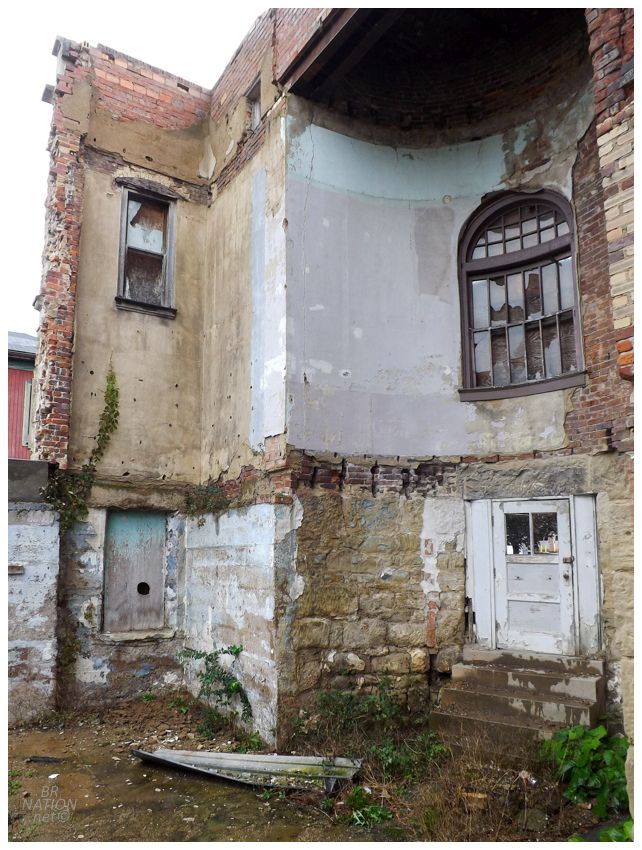
The local American Legion tried fundraising to fix up the old hall, but only managed to raise $25,000 when they needed to raise $500,000 in order to get access to $2.4 million in federal government allotments. Once that failed, the city tried to give the building to Lawrence County for an emergency center which would once again be able to use federal grant money, but that never happened either. At some point, Ironton's chief engineer said that the city needed to either stabilize the ruin or demolish the building. It wasn't long ago that this was more of an actual building than a lingering facade. The backside of the building was taken down in 2014, but I've been unable to figure out why they left the front. |
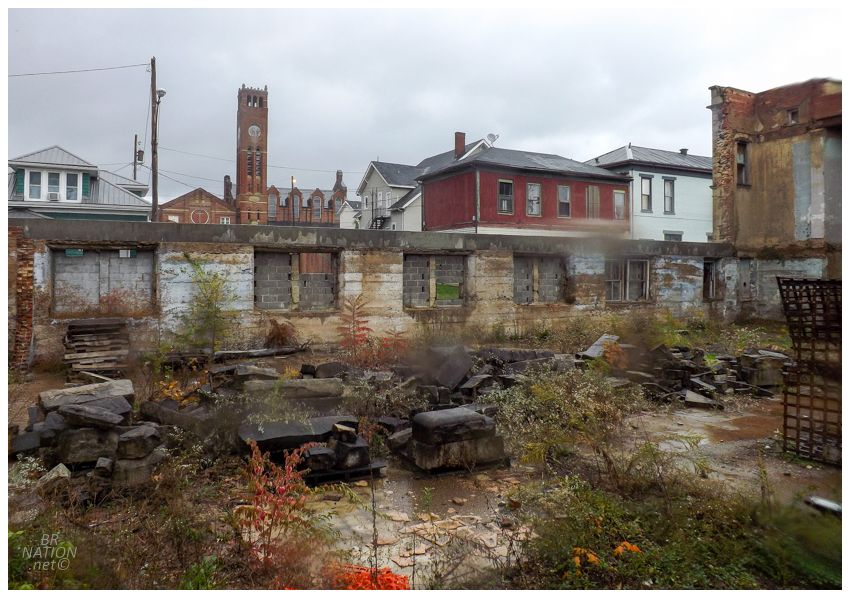
I'm fascinated by institutions that may go away. Churches, neighbourhood arenas, small convenience stores - anything that seems to be diminishing and may be a strange relic or forgotten in the future. As dark as this may be, with a disappearing user base, this usually makes me think of Legion halls as well - especially the elaborate ones where you see little activity. |

Although one thing the Legion has going for themselves is that they didn't tie themselves to one war, whereas the Grand Army of the Republic dissolved in 1956 after the death of the last Union Army soldier, Albert Woolson of Duluth. As for the Memorial Hall/GAR building in Ironton itself, there has been no recent news articles about plans for the facade. |

My phone screwed up the panorama stitching.
Another half hour up the Ohio River, I found myself in Portsmouth Ohio, standing outside another one of the fantastic stadiums I was excited to see on this trip. |
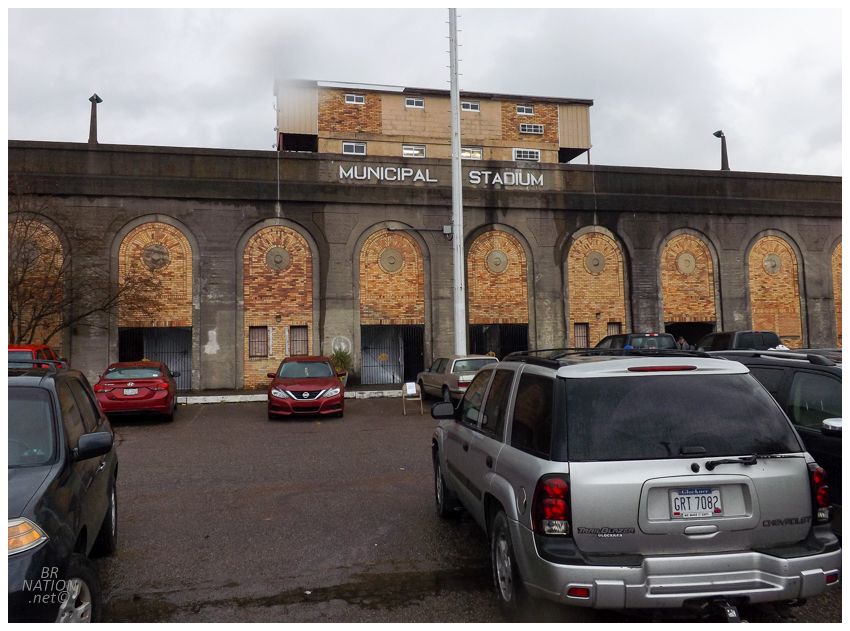
Standing there in the rain, I put my camera down as groups kept exiting their car and walking inside. One group consisted of a woman and two guys, where the woman kept going back and forth and not knowing what she was up to. Waiting patiently for the picture I wanted to take, the guy then yelled out in a very thick southern accent, "Sharon! He's taking pictures of the stayydium, get out of his way!" Instead, Sharon posed it up under the Municipal Stadium letters and I'm such a bad portrait photographer that I laughed and smiled instead of taking her picture. The man's comfort with me taking pictures made it seem like this isn't some hyper-specific stadium that's only of interest to stadium nerds, but rather one so famous that the people of Portsmouth are used to people making pilgrimages here. It does make sense. People want to see one of the last places the Detroit Lions were actually any good. |

Tiny Portsmouth might strike you as an odd place to be the home of an NFL franchise, but the meagre beginnings of the NFL started with the American Professional Football Conference and its 4 teams - Akron, Canton, Cleveland & Dayton. Teams from surrounding states would join within a month & then the whole thing was renamed to the National Football League in 1922. With cities like Decatur Illinois, Racine & Muncie fielding teams, it wasn't a far jump for a semi-professional team from nearby Portsmouth, with a population of 43000, to join the party as the Portsmouth Spartans. Purchasing a franchise in 1930, the Spartans had already started importing higher skilled players as early as 1928, simply to try and defeat the rival Tanks from nearby Ironton. With these players, the Spartans almost won the 1931 NFL championship, but back then the champion was crowned by win percentage. The Spartans had a shot though, as they were 11-3, the Packers were 12-2, and they were serendipitously scheduled to play each on the last game of the season. Except the Packers contested that they never signed a contract to play the game. And without playing it and risking a loss to the Spartans, the Packers were the league champions because they had the higher winning percentage. "Gree-hee-hee-eassy", as Bubbles would say. |

The Great Depression brought the league from 12 teams down to 10 in 1931, and down to 8 struggling teams for the 1932 season. Portsmouth was in debt and needed to make changes, resulting in player cuts and travelling by bus instead of train. And instead of paying field fees to practice in other cities, the Spartans simply stopped the bus and got out to practice in farm pastures, or in the case of NYC, Central Park. Portsmouth still had an .833 win percentage (5-1-4) with two games left in the season (ties didn't count towards win percentage). The Chicago Bears had the same record, while greasy Green Bay had a .909 win percentage (10-1-1). One of Green Bay's last two games was against Portsmouth, so now Portsmouth controlled its own destiny. The tiny town on the banks of the Ohio was jammed with traffic, as 14000 people crowded into the 8,500-capacity Municipal Stadium in a fire chief's nightmare. People also sat atop the flood walls outside the stadium, while plenty of Portsmouth residents threw eggs and oranges at the cowardly Packers as they got off the team bus. Still insulted by the Packers a year earlier, Portsmouth chestily decided to only play 11 players for the whole game. From kicking, to passing, to defense, the same 11 players played and the Packers still lost 19-0. After the game, a Packers official admitted that the crowd played a factor. "I never have seen a crowd so unsportsmanlike and insulting as the crowd in Portsmouth. From the moment the Packers arrived at the field until the time they left, they were subjected to a barrage of epithets and collection of abuse which would have taken the heart out of any team. The unfortunate attitude was not confined to the male fans, but was general among the women as well." |
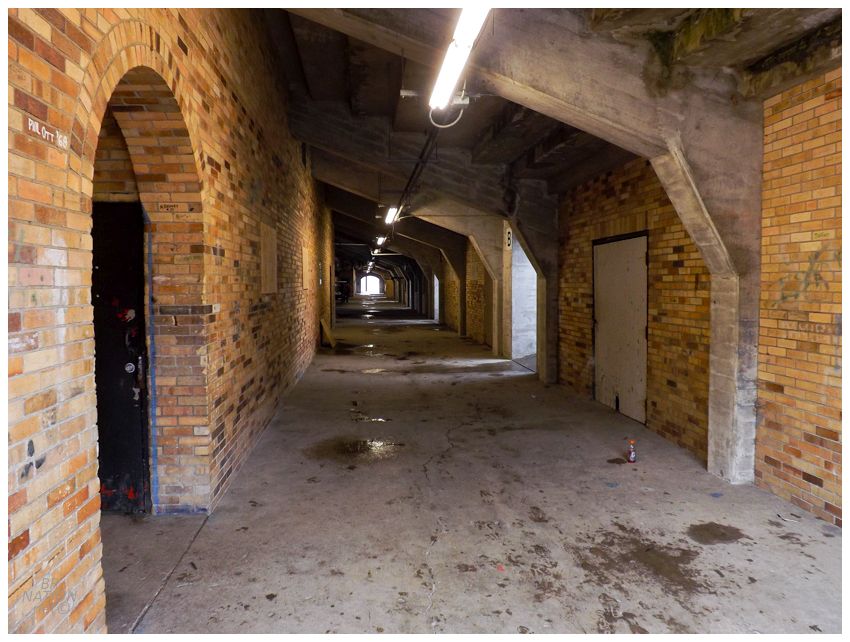
Chicago won its last game as well, leaving Chicago and Portsmouth tied for the league championship. Never having run into this problem before, the two teams & the league decided to play a one-off game in the Windy City for the championship of the NFL. Arriving in Chicago, the snow was waist deep and a bitter storm was in full effect. It was proposed that the game instead be played at the local hockey rink, the Chicago Stadium, home of the Blackhawks, which would be the first ever indoor professional football game, and the first played on only a 60-yard field without field goals. The Spartans were without their star quarterback - who had to go back to Colorado to coach college basketball - while also being 3 players short of the allowable 20. They fought valiantly to keep the game 0-0 well into the fourth quarter, but eventually the Bears faked a run, pulled back and lobbed a short TD pass. Bears championship. The excitement and financial success of this championship game was apparent to the NFL. For the 1933 season, the league was divided into 2 divisions and there would always be a championship game to finish off the year. The journey towards the eventual Super Bowl had begun with the Chicago Bears and Portsmouth Spartans playing in a hockey rink built in 1929. |
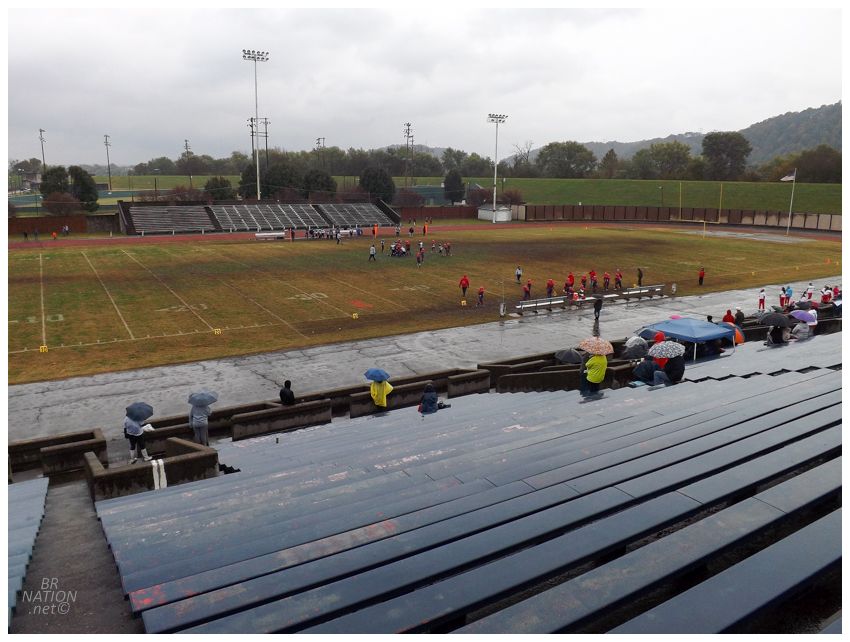
The Spartans fell even further into debt during the 1933 season. They would have 4000 or 5000 faithful come out to watch practice, but then at game time there would only be 2000 people in the stands because people simply didn't have ticket money in the height of The Great Depression. Maybe it's for the best they didn't have ticket money, because this 1933 season ended in classic Detroit Lions fashion before they even moved to Detroit. Tied for the league lead near the end of the season, the Spartans then lost to the putrid Cincinnati Reds, who were one of the worst teams in football and had only scored 15 points all year. Meanwhile, Chicago handled their business and won the 1933 championship against the New York Giants. Before the 1934 season, the team was sold to George A. Richards, with the agreement that he'd move the team to Detroit to become our beloved Detroit Lions. Richards would pay somewhere around $15,000 for the team and still have plenty of money left over to entice the old Spartans quarterback out of retirement and away from his job at the Colorado School of Mines, as well as bring back 12 other former Portsmouth Spartans. One of those players was Glenn Presnell, who hit a 54-yard field goal in 1934 and had this stand as the longest Detroit Lions field goal until Jason Hanson finally broke the record in 1995. The Lions finished second in 1934, but finished first in 1935 and had a date with the New York Giants in the championship game. Beating the Giants 26-7, this is one of four Detroit Lions championships that happened before the merger that brought the official Super Bowl in 1966. With the former Lions dens of Tiger Stadium, University of Detroit Stadium & The Silverdome all long gone, it's nice that Portsmouth's Municipal Stadium still stands today. One of the local high schools left when they built a fancy new stadium in 2009, but Notre Dame High School plans on staying here and people like Dr. Sean Dunne, professor at Portsmouth's Shawnee State University, have recently been fighting for renovation grants for the stadium. |

I wrapped things up with a quick drive around Portsmouth to grab their Scioto County Courthouse, built in 1927. With the sun setting in Portsmouth, I now needed to cover some distance towards Cincinnati. Things were going according to plan though, as my reserved hotel was an hour away and that was about the perfect distance I wanted to make it tonight (there were also surprisingly few options in the sparsely populated area between Portsmouth and Aberdeen). And so, I checked into my Brown's Motel, which was clean, safe & a steal for $70 CAD. |

The annoying thing was that Aberdeen was much smaller and sleepy than I imagined. And where I could really go for a sit down meal with a pint, that wasn't happening unless I crossed the Ohio River into much bigger Maysville, Kentucky. Pulling out of the gas station in Aberdeen, all of these cop cars were ahead, turning people around and preventing them from taking the bridge across. I wondered if someone had jumped off or if there was a live shooter event. Some guidance from the police would have been helpful, especially as they weren't exactly frantic and could have told us the score. So I drove all the way up to the next bridge on the Ohio River, then all the way back down to Maysville, where I was then starving hungry and not ready for the parade and road closures I was met with there. Noticing some little goblins, it then hit me, it was a Halloween parade! But still, what was up with the damn bridge? Deciding to just grab some Taco Bell back in Aberdeen, I asked the guy working the drive-thru and he told me they close the bridge down once a year so kids can walk across in their Halloween costumes. Oh, wtf! I tried to complain to Steve about all this inconvenience over text back at the hotel, but the annoyance didn't even register with him because he thought it was just the coolest thing that they let the kids walk across the substantial bridge every Halloween. Now that I had some Taco Bell and I wasn't so hangry, I knew he was right. |

Waking up before the sun and excited for my drive into Cincinnati, I pictured the perfect shot of some old merchant or farm house on sprawling grounds with big trees all set on the Ohio River. I clearly wasn't thinking because most of those homes were all on the other side of the road, away from the floodwaters of the Ohio. Whatever. I preferred this Bengals a-frame anyway. |
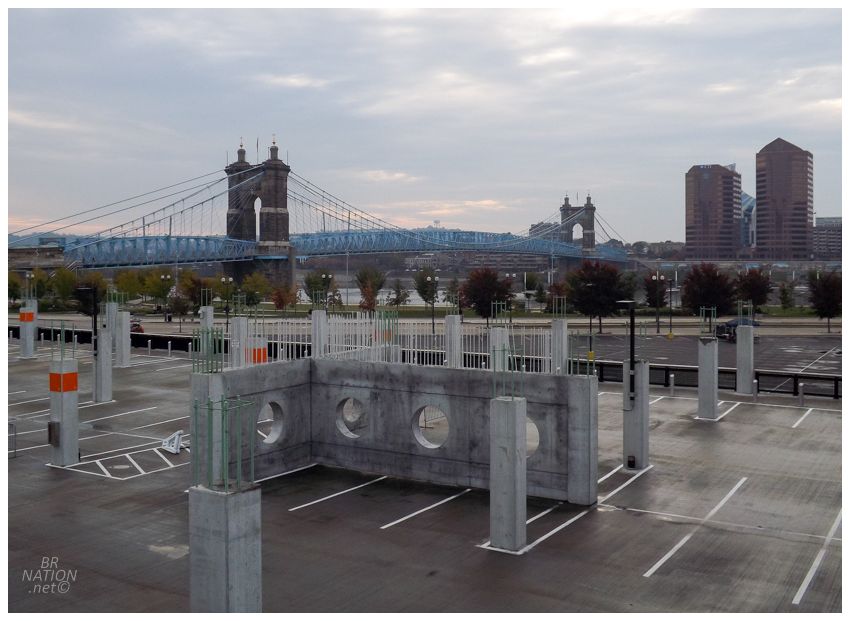
Pulling into Cincinnati, I had the GPS set right to the city center and waited too long to change it before merging onto the freeways. This was a happy accident though, as it was still early enough that I could pull into some little cul-de-sac right across from the Bengals stadium, grab my pictures, stare out at the gorgeous Roebling Bridge, then punch in my car rental return location. It was now clearly time for a fine Cincinnati day. |


